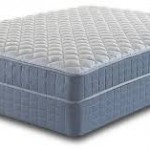Apply Plaster Texturing to Release the Artist in You

In looking for a choice of plaster, you can use any dry finishing plaster as long as you want to mix it yourself, and depending on the texture you would like, you may have to mix in fine quartz sand for better agent for texturing. If this is the route you are taking, a couple of quality name brands are Thistle Multi-Finish and Diamond Veneer Finish. But who has time for all that? What I like to recommend is Sheetrock brand Joint Compound. This comes ready mixed in 5 gallon buckets and is available at your local Home Depot or other hardware store for between $11.00 and $14.00.
Depending on the type of texture you are looking for, a variety of materials will be needed. Since we are using the pre-mixed joint compound, the container will already be included. You may want to slowly stir the compound with a rounded stick or metal rod by hand before use. When using any form of plaster or joint compound, remember to always wear gloves because as it sets it generates heat. It’s normally not enough for any serious damage but why be uncomfortable when it is so easily avoided?
It’s always good practice to test your pattern on a surface that can be discarded later. Using a trowel, apply a layer of the compound onto your surface about 10mm thick or so, depending on how deep you want your textures. I prefer light textures so I go shallow at about 8mm. From here, it is really up to your imagination. The sky (or the ceiling, in this case) is the limit on what you can achieve.
Some suggestions for creating patterns are a plain old paint roller, or a specially patterned roller. This is quick and easy to apply, allowing you a greater chance of uniformity. I like to use the trowel itself, moving it clockwise to make circular swirl patterns. It’s a good idea to have a tapering knife handy, as about every 15-20 minutes, you should go back and level off any sharp peaks. This will keep them from breaking off later if anything comes into contact with the wall. Other ideas are to use a selection of brushes, from a regular stiff, flat paintbrush, a stippling brush, or a stomp brush. Drywall and putty knives will give you more control of the patterns but require the most strokes and a better eye for uniformity. A scratcher trowel can be fun and give you more grooves with fewer strokes. Or, go back to your childhood finger-painting days and use your own hands. Since this is DIY, you have complete artistic license for the pattern you would like.
Applying plaster wall and ceiling texture is one of the most creative methods of home renovation and allows you to really put yourself into your work. Since the science is done for you, with the pre-mixed compound, you are left with pure art. Let your imagination soar and impress your friends and family not with what’s on the walls, but with the walls themselves.



